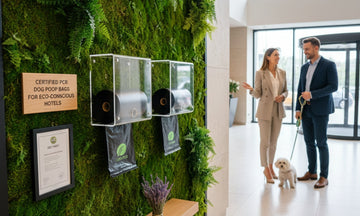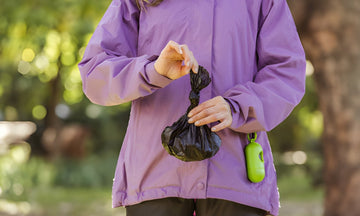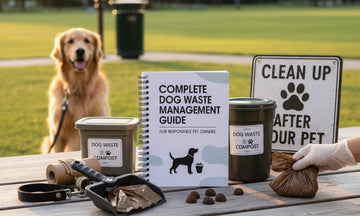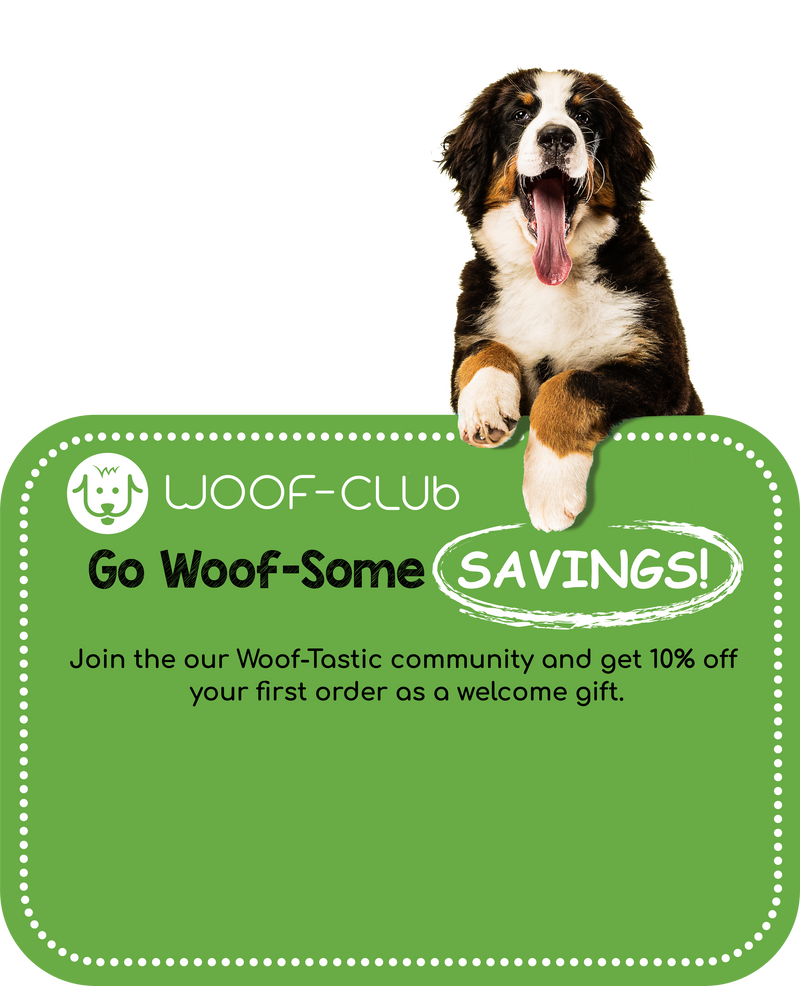Have you ever experienced the disappointment of a poop bag tearing just as you're cleaning up after your canine? This is a common and unpleasant scenario that many puppy owners encounter; however, it is completely avoidable. In this text, we explore the importance of poop bag thickness, explaining why luggage measuring at least 20 microns provides the power and reliability you want for strain-free walks.
We also examine the distinctive materials used in poop bags, which range from conventional polyethylene to biodegradable and compostable options, as well as what the eco-friendly labels clearly indicate. With insights on certifications, decomposition timelines, and a way to avoid misleading advertising claims, this guide will help you make a knowledgeable choice.
Whether you’re concerned about hygiene, sustainability, or simply want to avoid messy situations, this newsletter provides all the information you need to choose the right dog poop bag for both your needs and the environment. Say goodbye to skinny, unreliable baggage and hiya to purer, greener walks.
Why Thin Poop Bags Are a Problem
Thin poop bags would possibly appear to be a budget-friendly or eco-aware desire, but they come with severe drawbacks that far outweigh any savings. Bags simply 6–8 microns thick frequently tear or leak at some point of use, leading to unsightly and unsanitary messes. No one wants to deal with warm temperatures or moisture seeping through flimsy bags while picking up dog waste, yet that’s exactly what occurs.
In addition to soreness, health risks are also a concern. Dog waste consists of dangerous bacteria and parasites. A torn bag increases exposure to those pathogens, which poses greater risks for you, your pet, and others nearby.
While thinner bags may use less material, they often require double-bagging, which negates any environmental advantage and creates more waste. mistakenly suppose they may be making a responsible choice but end up with greater stress and trash.
Free bags available at dog parks or reused grocery bags are often too fragile to be relied upon for dependable use. That’s why professional dog walkers and aware pet dads and moms prefer thicker, long, durable poop bags: they provide better hygiene, allow for pressure-free walks, and contribute to That’s why professional dog walkers, as well as conscientious pet parents, prefer thicker, longer-lasting poop bags: they offer better hygiene, enable stress-free walks, and support genuine environmental care.
Bottom line: put money into luxurious luggage. Your hands, fitness, and sanity will thank you.
Understanding Poop Bag Thickness and Materials

The technology behind the creation of poop bags is renowned for the significance of thickness and materials. When analysing a bag, at its best, its thickness is measured in microns. The better the micron count, the more durable the bag will be. Most pleasant poop bags range between 15 and 20 microns, with premium options presenting the maximum 20-micron thickness for foremost safety.
Several unique materials are typically used to make poop bags.
1. Why Thickness Matters:
The thickness of a poop bag, measured in microns, immediately affects its sturdiness. Most excellent luggage ranges from 15 to 20 microns, with 20-micron baggage offering maximum safety in opposition to tears or leaks. Thicker bags create a stronger barrier between your hand and waste, which is essential for large puppies or longer walks.
2. Material Types and Their Roles
Poop suitcases are crafted from various substances, each with particular blessings. Polyethylene variations (HDPE, LDPE and LLDPE) offer energy, flexibility, and water resistance. Plant-based substances like cornflour and PBAT provide compostable, biodegradable alternatives. Brands like Doggy Do Good use primarily bio-based components for sustainable manufacturing.
3. Recycled Material for a Greener Future
Some bags are created using customer-submitted recycled plastic, decreasing reliance on virgin petroleum. For example, Earth Rated makes use of luggage made from sixty-five percent licensed recycled plastic, helping save hundreds of thousands of pounds of plastic waste from entering landfills.
4. Advanced Manufacturing for Better Performance
Bag sturdiness additionally depends on production strategies. Quality producers beautify performance by way of including calcium carbonate (tear resistance), titanium dioxide (opacity), and slip sellers (smooth allotting).
5. Striking the Right Balance
The ideal poop bag balances energy, leak resistance, and environmental duty. While thicker bags are longer and can handle greater waste, they'll decompose much more slowly. For eco-conscious puppy owners, choosing certified compostable or recycled bags ensures cleaner walks without harming the planet.
Beyond thickness, don't forget factors like leak resistance, tear power, and appropriate sizing to your canine's desires. Essentially, the perfect poop bag balances sturdiness with environmental responsibility.
Let’s Find Our Post-Consumer Recycled Bags: Choosing
The Right Eco-Friendly Poop Bags

Navigating the sector of green poop luggage can feel overwhelming with numerous alternatives claiming to be first-rate for the planet. First and most important, search for luggage with good enough thickness—
1. Prioritize Thickness and Certifications
When selecting environmentally friendly luggage, remember that thickness is crucial. Aim for luggage that can be at least 20 microns thick to save you messy "leap forward" incidents. Additionally, do not take marketing claims at face value; instead, look for certified compostable labels such as EN 13432 (Europe) or ASTM D6400 (USA). These certifications ensure that the baggage decomposes completely without leaving behind microplastics.
2. Be Aware of Misleading “Plant-Based” Claims
Often, they are made from natural materials. In fact, most of these products contain 50–80% PBAT (a biodegradable fossil-gas polymer) and only 15–30% real plant material, such as cornflour. Understanding these facts helps you make more informed decisions.
3. Strength Without Sacrificing Sustainability
Eco-awareness doesn’t imply vulnerability. Some certified compostable bags can hold up to 3 kg without tearing. Some brands even claim Some brands even claim that their luggage is 20% stronger than that of others, showcasing the seamless integration of durability and sustainability.
4. Explore Recycled Material Alternatives
Another brilliant alternative is luggage made from recycled plastic. Some brands use 50–75% recycled content, which is occasionally blended with natural substances like oyster shell waste, providing an eco-friendly solution without compromising performance.
Need high-quality poop bags? We have a suitable solution. Contact us today and walk with confidence!
Conclusion
Choosing the right poop bags is more than just a habitual choice; it significantly impacts hygiene, comfort, and the environment. Bags with a minimum thickness of 20 microns help prevent rips and unsightly injuries. While cheaper, skinny baggage often requires double-bagging, reducing both price performance and eco-friendliness.
For eco-conscious dog owners, alternatives such as compostable or recycled bags are available; however, it is critical to verify these claims through certifications like EN 13432 or ASTM D6400. Thickness remains important for all types of cloth, whether it is plant-based, recycled plastic, or conventional.
Responsible puppy care includes using dependable gear. For future reference, please review the micron rating and sustainability labels to select a bag that meets both your dog's needs and your values. Your hands, our network, and the planet will admire it.
At WoofPanion, we live for wagging tails and joyful moments—because each second with your doggy must be nothing brief of high quality.
Key Takeaways
Understanding the thickness of poop bags is vital for ensuring each pet's hygiene, comfort, and environmental responsibility during daily walks.
• Choose bags that have a minimum thickness of 20 microns; bags thinner than this (6–8 microns) often tear, resulting in messy and unhygienic conditions during cleanup.
• Thin luggage frequently requires double-bagging, which negates any environmental benefits and increases waste despite being more eco-friendly initially.
• Look for legitimate certifications such as EN 13432 or ASTM D6400 when choosing eco-friendly alternatives, as many "biodegradable" bags still take a thousand years to decompose.
• Quality matters more than advertising and marketing claims; properly licensed compostable luggage breaks down in 3 to 6 months while maintaining durability similar to that of conventional plastic.
• Invest in luggage with a suitable thickness for your dog's size; larger puppies require thicker luggage, and this barrier protection prevents exposure to harmful microorganisms and parasites.
The ideal choice of poop bags balances durability, hygiene, and environmental responsibility, transforming ordinary cleanup from a disturbing chore into a reasonable aspect of pet ownership.
Innovative Pet Product by Woofpanion
FAQs
Q1. How thick does canine poop luggage need to be?
For optimal strength and reliability, it is recommended to choose poop bags that are at least 20 microns thick. The thickness of the material provides greater safety against tearing and leaking during use.
Q2. Are skinny poop bags environmentally friendly?
While thin luggage may seem environmentally friendly due to using less fabric, it often requires double-bagging, which negates any environmental benefits. Properly licensed compostable or recycled bags that have an appropriate thickness are generally more environmentally responsible choices.
Q3. What should I search for while deciding on green poop luggage?
Look for valid certifications, such as EN 13432 or ASTM D6400, to ensure that the luggage products are truly compostable. Be cautious of vague "biodegradable" claims, as some products can still take up to 1000 years to decompose. Consider choosing options made from recycled materials as well.
Q4. How do I properly remove dog waste luggage?
Most poop bags, including compostable ones, typically end up in landfills or incineration centers. Always verify local regulations; however, it is generally best to seal the bag tightly and place it in separate trash receptacles.
Q5. Can I reuse plastic bags for picking up canine waste?
While reusing bags such as newspaper or grocery bags may appear environmentally friendly, they are often too thin or narrow to effectively hold waste. It's safer and more hygienic to apply custom-made dog waste bags of suitable thickness and length to your canine

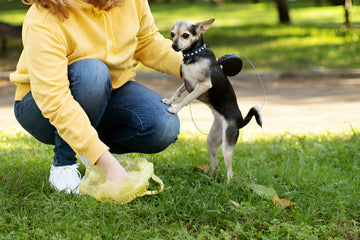
'/%3E%3Ccircle cx='60' cy='45' r='18' fill='%23f4c2a1'/%3E%3Cpath d='M42 75 Q60 90 78 75 Q78 95 60 100 Q42 95 42 75' fill='%23f4c2a1'/%3E%3Cpath d='M45 40 Q60 25 75 40 Q75 35 60 30 Q45 35 45 40' fill='%23d4a574'/%3E%3Ccircle cx='52' cy='50' r='2' fill='%23333'/%3E%3Ccircle cx='68' cy='50' r='2' fill='%23333'/%3E%3Cpath d='M55 58 Q60 62 65 58' stroke='%23333' stroke-width='1.5' fill='none'/%3E%3C/svg%3E)
